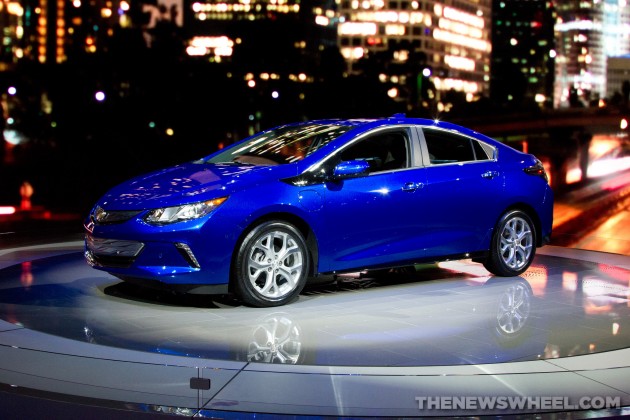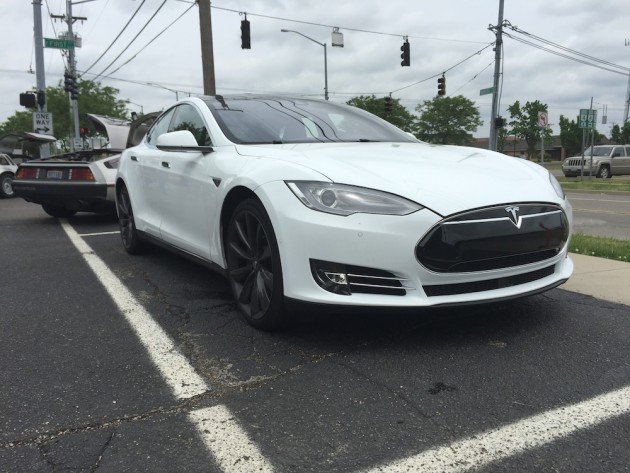It’s no secret that gas prices are falling. With Iranian oil gushing into the market, gas is expected to get cheaper and cheaper, eventually dropping below two dollars a gallon.
This has been very bad for hybrids and other alternative-fuel vehicle sales. Although Toyota’s sales were up by 1% over last July, Prius sales were down by 13%. Nissan’s sales rose almost 8% over last July, but its electric vehicle, the LEAF, was hit very hard, with sales dropping a staggering 61%.
The rapidly expanding SUV, truck, and luxury markets have people wondering, is this the end of electric and hybrid vehicles?

No, not the Volt! ANYTHING BUT THE VOLT!
The answer is almost certainly not.
This is because of a government regulation called CAFE, or Corporate Average Fuel Economy, established under the Energy Policy and Conservation Act. Instituted way back during the beginnings of the energy crisis in the 1970s, CAFE standards attempt to reduce energy consumption in cars and light trucks by increasing their fuel economy.
In a nutshell, to pass CAFE standards, the average fuel for the entire fleet of vehicles that a manufacturer produces must exceed a certain amount, or the manufacturer faces fines (unless they can cover it with CAFE credits, which come from exceeding requirements in previous years). This isn’t your normal (or arithmetic) average, but a “harmonic” one, which we won’t go into (because math) and which results in an average that reflects the amount of fuel each vehicle uses over the same distance (rather than the mpg we’re used to, which measures distance over the same amount of fuel).

Man, Tesla is really knocking that one out of the park
These standards are set by the National Highway Traffic Safety Association, and are coupled with greenhouse gas restrictions from the Environmental Protection Agency (using the Clean Air Act) to force car and light truck manufacturers to make their vehicles more fuel efficient.
In the next ten years, the standard fuel economy is driving up. By 2025, those standards are set to be the equivalent of 54.5 mpg for cars and light-duty trucks. If you don’t think that’s so different, the standard for 2016 is only 35.5 mpg.

Pictured: what we might as well be doing compared to 10 years from now
Also, these regulations are spreading to cover medium- and heavy-duty vehicles, which covers anything from large trucks and SUVs to semi-trucks, including all sorts of buses and work trucks.
Stack on top of that the fact that the CAFE regulations give (potentially very large) incentives for automakers to build hybrids, electric vehicles, and other alternate-fuel vehicles, all of it watched over by the NHTSA, the ridiculed agency with a chip on its shoulder (remember what they are doing to Chrysler).
Add all that up, and you get an environment that will soon be very friendly to hybrids, EVs, and alternative fuels.

Hooray!


The News Wheel is a digital auto magazine providing readers with a fresh perspective on the latest car news. We’re located in the heart of America (Dayton, Ohio) and our goal is to deliver an entertaining and informative perspective on what’s trending in the automotive world. See more articles from The News Wheel.



